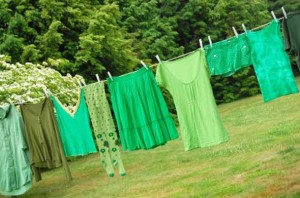These days, it seems, the provenance of green products matters.
Manufacturers who have long aligned themselves with environmental causes, like Seventh Generation and Method, have rebounded better from the recession than the “green” lines of larger, more traditional manufacturers.
Analysts say the reason is that the niche manufacturers tend to attract serious green customers who want products that are good for the environment even if they cost more. And if these customers find that a botanical ingredient isn’t quite as effective as bleach, they believe it is better for their house and lungs.
As reported in an article in The Times, sales of green products over all dropped during the recession. But the committed customers have been quicker to come back to environmentally friendly products, compared to the much larger audience of mainstream customers, who may have been willing to buy green products when times were flush but scaled back when price started to matter.
While competitors like Clorox, Church & Dwight and S.C. Johnson were hurrying to introduce green products around 2008, Procter & Gamble, the household products giant, decided it would not.
Len Sauers, vice president for global sustainability, said the company considered such a move five or six years ago. But in conducting market research about green products, what the company found was that “not many people bought them,” he said.
He said the company didn’t want to introduce more products into a category that was a relatively small portion of the overall market. He estimated that 15 to 20 percent of shoppers were willing to pay more, or lose some efficacy, for products with environmental attributes.
But Mr. Sauers said 70 percent or more of consumers in the United States were not willing to make those trade-offs for green products, though they would buy the products if they cost the same.
Procter & Gamble took another tack, at least with laundry detergent, and emphasized money-saving. Instead of labeling a product as green, it introduced Tide Coldwater, which, as the name suggests, works with cold water instead of hot. In doing so, consumers can save as much as 80 percent of energy costs on every load, the company marketing says.
In the last year, retail sales of Tide Coldwater have increased 24 percent, he said.
Want to read more? Head to the New York Times.
